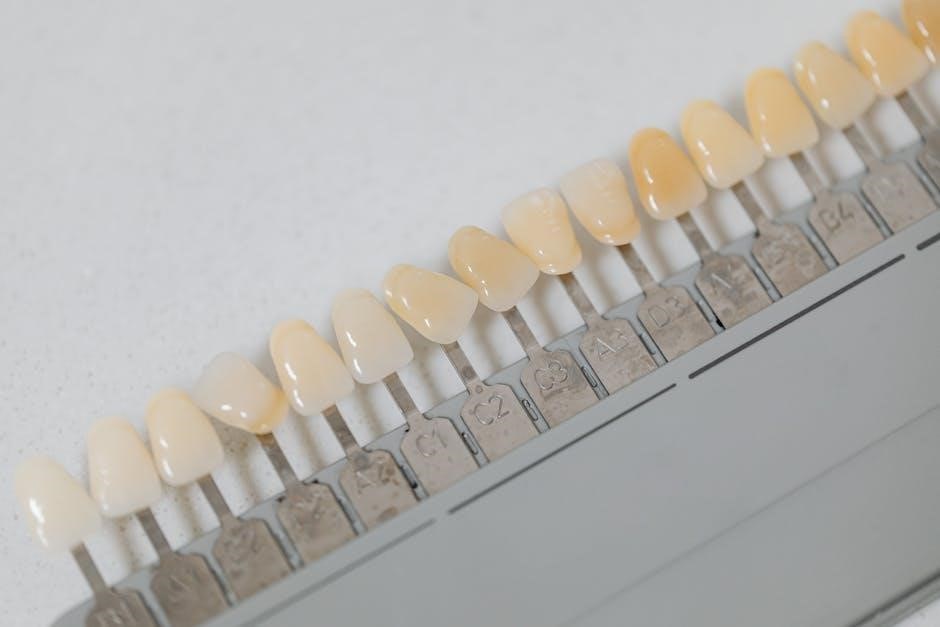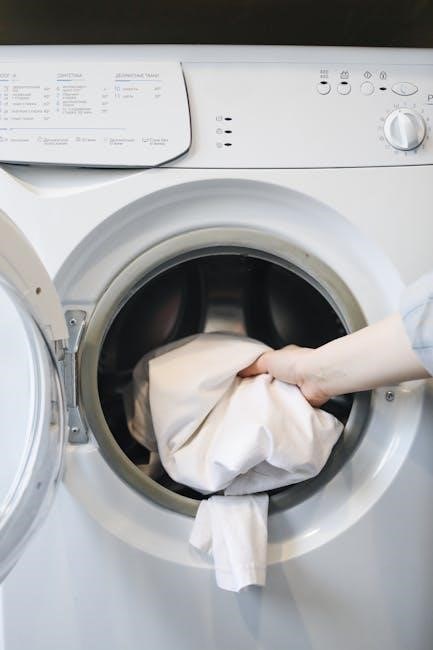The camshaft is a critical component in internal combustion engines, responsible for converting rotational energy into linear motion to operate engine valves efficiently. This guide explores its essential role, design, and functionality in modern engines, providing insights into its importance for optimal performance, fuel efficiency, and durability. Understanding the camshaft is key to enhancing engine capabilities and addressing common challenges in automotive engineering.
1.1 Overview of Camshaft Importance
The camshaft is a linchpin in internal combustion engines, playing a pivotal role in ensuring efficient operation. Its primary function is to regulate the opening and closing of engine valves, directly impacting performance, fuel efficiency, and overall engine health. A well-designed camshaft optimizes power output, reduces emissions, and enhances durability. Over time, advancements in camshaft technology have led to improved engine responsiveness and efficiency. Modern engines rely heavily on camshafts to balance power delivery and fuel economy, making it a cornerstone of automotive innovation. Its importance extends to both conventional and hybrid powertrains, underscoring its relevance in evolving engine technologies.
1.2 Brief History of Camshaft Development
The camshaft has evolved significantly since its inception in early internal combustion engines during the late 19th century. Initially, primitive designs focused on basic valve operation, but advancements in automotive technology drove innovation. The early 20th century saw the introduction of overhead camshaft designs, pioneered by engineers like Ettore Bugatti, which improved performance and efficiency. By the mid-20th century, camshafts were crafted from stronger materials and featured hydraulic lifters for reduced maintenance. Modern developments include computer-aided design and variable valve timing, enhancing precision and adaptability. This evolution underscores the camshaft’s critical role in engine advancement over the past century.
1.3 Purpose of a Camshaft in Engines
The camshaft plays a vital role in internal combustion engines by converting rotational energy from the crankshaft into linear motion to operate engine valves. Its primary function is to open and close intake and exhaust valves at the correct timing to ensure proper air-fuel mixture intake and exhaust gas expulsion. This precise operation is essential for optimal engine performance, efficiency, and emissions control. The camshaft acts as a mechanical link between the crankshaft and valves, synchronizing their movements to maintain smooth engine operation and maximize power generation. Its design and functionality are central to achieving balanced engine performance and reliability.

Camshaft Components and Design
The camshaft consists of key components such as lobes, followers, and journals, designed to translate rotational motion into precise valve actuation. Its design ensures synchronized operation with engine components, optimizing performance and durability while minimizing wear.
2.1 Key Parts of a Camshaft
A camshaft comprises several vital components, each serving a specific function. The lobes are the most recognizable part, designed to push followers or lifters, which in turn operate the engine valves. The journals are cylindrical sections that support the camshaft within the engine, allowing it to rotate smoothly. Additionally, some camshafts feature bearings that further reduce friction and enhance durability. These parts work together to ensure precise timing and efficient operation of the engine’s valvetrain, making the camshaft a cornerstone of modern internal combustion engines.
2.2 Camshaft Lobes and Their Function
The camshaft lobes are protrusions that convert rotational motion into linear motion by pushing against followers or lifters. Each lobe is precisely designed to control the opening and closing of engine valves at the correct timing. The shape and size of the lobes determine the valve lift and duration, directly influencing engine performance. Some lobes are symmetrical for balanced operation, while others are asymmetrical for specialized functions. Proper lobe design ensures efficient combustion, power delivery, and fuel efficiency, making them a critical element in engine operation and performance optimization.
2.3 Followers and Lifters
Followers and lifters are critical components that transfer the camshaft’s motion to the engine valves. They ensure the valves open and close at the correct timing, maintaining engine synchronization. Followers are typically hydraulic or solid, with hydraulic types adjusting to maintain zero clearance, while solid followers require manual adjustment. Lifters, often used in overhead valve engines, ride on the camshaft lobes and push the valves down. Proper functioning of these parts is essential for efficient combustion, power delivery, and engine longevity. Any wear or malfunction can lead to poor performance, making regular inspection and maintenance crucial for optimal engine operation and reliability.
2.4 Bearings and Journals
Bearings and journals are essential for supporting the camshaft and enabling smooth rotation. Bearings are typically located at the camshaft’s ends and between lobes, absorbing radial and axial loads. Journals are the cylindrical surfaces on which the bearings ride, precision-machined for optimal fit. Proper lubrication is critical to prevent wear and overheating. High-quality materials, such as steel or alloy, are used for durability. Regular inspection of bearings and journals is vital, as wear can lead to increased clearance, noise, and eventual engine failure. Maintaining these components ensures the camshaft operates efficiently and reliably over time.

Types of Camshafts
The types of camshafts include overhead camshaft (OHC), overhead valve (OHV), single vs. dual camshafts, and variable valve timing (VVT) camshafts, each suited for different engine applications and performance requirements.
3.1 Overhead Camshaft (OHC)
The Overhead Camshaft (OHC) is a design where the camshaft is located in the cylinder head, operating directly on the valves. This configuration reduces mechanical complexity and allows for higher RPM capabilities. OHC engines are known for their compact design, improved fuel efficiency, and better heat management. They are widely used in modern vehicles due to their efficiency and performance advantages over traditional overhead valve systems. The OHC design facilitates easier maintenance and often features hydraulic lifters for reduced wear and tear. Its popularity stems from its balance of power, efficiency, and reliability in various engine applications.
3.2 Overhead Valve (OHV) Camshaft
The Overhead Valve (OHV) camshaft is located in the engine block and operates the valves through lifters, pushrods, and rocker arms. This traditional design is simpler and more cost-effective than OHC systems. OHV camshafts are known for their durability and ease of maintenance, making them ideal for heavy-duty applications. However, they are less efficient at higher RPMs due to increased mechanical complexity. Despite this, OHV systems remain popular in certain engine configurations, offering a reliable balance between performance and affordability. Their robust construction ensures longevity, even in demanding operating conditions.
3.3 Single vs. Dual Camshafts
A single camshaft is located in the engine block and operates all valves through lifters, pushrods, and rocker arms, common in OHV engines. Dual camshafts, found in DOHC engines, feature two camshafts—one for intake and one for exhaust valves—providing better valve control and higher RPM efficiency. Single camshafts are simpler, more durable, and cost-effective, while dual camshafts offer superior performance, especially in high-speed applications. The choice depends on engine design, performance requirements, and complexity tolerance. Dual camshafts are favored in sports and high-performance vehicles for their precision and power, whereas single camshafts are preferred for their reliability and lower maintenance needs.
3.4 Variable Valve Timing (VVT) Camshafts
Variable Valve Timing (VVT) camshafts are advanced components designed to optimize engine performance by adjusting valve timing dynamically. This technology allows the engine to achieve better fuel efficiency, reduced emissions, and increased power output by varying the timing of valve opening and closing. VVT systems integrate hydraulic or electronic actuators to modify camshaft operation in real-time, ensuring optimal engine performance across various RPM ranges. This innovation enhances low-end torque and high-end power, making it a critical feature in modern engines. By adapting to driving conditions, VVT camshafts provide a balance between efficiency and performance, making them indispensable in contemporary automotive engineering.

Camshaft Materials and Manufacturing
Camshafts are typically made from durable materials like steel or cast iron, ensuring strength and longevity under high-stress engine conditions. Advanced manufacturing processes, including precision machining and grinding, ensure exacting tolerances for optimal performance and reliability.
4.1 Common Materials Used
Camshafts are primarily constructed from high-strength materials such as steel alloys, cast iron, and sometimes billet steel for durability and resistance to wear. Steel alloys are favored for their excellent strength-to-weight ratio and ability to withstand the high stresses of engine operation. Cast iron is also commonly used due to its rigidity and heat tolerance. In high-performance applications, specialized materials like nodular iron or even titanium are employed to enhance strength and reduce weight. The choice of material depends on the engine’s intended use, with priority given to longevity, thermal stability, and cost-effectiveness.
4.2 Machining and Grinding Process
The camshaft machining process begins with raw material selection, followed by precision cutting using CNC machines to achieve exact dimensions. The lobes, journals, and other critical features are shaped with high accuracy. Grinding is then employed to refine surfaces, ensuring smooth operation and precise tolerances. Specialized grinding wheels are used to polish lobes and journals, reducing friction and wear. The entire process is tightly controlled to meet stringent quality standards, ensuring optimal performance and durability in engine applications. Advanced techniques like cylindrical grinding and lobe finishing further enhance the camshaft’s precision and longevity.
4.3 Heat Treatment and Surface Coatings
Heat treatment is crucial for enhancing the camshaft’s mechanical properties, such as hardness and fatigue resistance. Processes like case hardening strengthen the surface while maintaining a ductile core. Surface coatings, such as nitriding or chrome plating, are applied to reduce wear and corrosion. These treatments ensure the camshaft withstands high-stress engine environments. Advanced coatings also improve lubricity, minimizing friction between moving parts. Proper heat treatment and coating techniques are essential for optimizing durability and performance, making them critical steps in camshaft manufacturing. These processes directly impact the engine’s overall efficiency and longevity.

Camshaft Installation and Setup
Camshaft installation requires precise alignment and timing to ensure proper engine function. Proper setup involves pre-installation checks, correct lubrication, and synchronization with engine components.
5.1 Pre-Installation Checks
Before installing a camshaft, perform thorough inspections to ensure compatibility and condition. Check for wear on lobes, journals, and bearings. Verify camshaft alignment with engine components and measure lifter pre-load. Inspect the cylinder head for damage or debris. Lubricate all contact surfaces to prevent initial wear. Ensure timing marks align correctly for proper synchronization. Replace any worn or damaged parts to avoid future issues. Proper preparation ensures a smooth installation process and optimal engine performance. Always consult the manufacturer’s specifications for precise guidance.
5.2 Step-by-Step Installation Guide
Begin by removing the old camshaft and cleaning the engine area. Install the new camshaft, ensuring proper alignment with the crankshaft. Replace followers or lifters, applying lubricant to all contact surfaces. Secure the camshaft with the retaining plate or gear, tightening bolts in the specified order. Reattach timing components, ensuring synchronization with the crankshaft. Replace the valve cover and connect any electrical or hydraulic components. Refer to the manufacturer’s manual for torque specifications and sequence. Double-check alignment and timing before starting the engine to ensure smooth operation and prevent damage.
5.3 Timing and Synchronization
Proper timing and synchronization are crucial for engine operation. Align the camshaft with the crankshaft using timing marks or gears. Ensure the camshaft sprocket is securely fastened and properly phased. Use a timing light or manufacturer-specific tools to verify synchronization. Correct timing ensures valves open and close in harmony with piston movement, optimizing performance and fuel efficiency. Misalignment can lead to poor engine performance, reduced power, or internal damage. Always refer to the manufacturer’s specifications for precise alignment procedures to guarantee accurate synchronization and reliable engine operation.
5.4 Post-Installation Testing
After installing the camshaft, perform a series of tests to ensure proper functionality. Start by turning the engine manually to check for binding or unusual resistance. Next, start the engine and listen for any abnormal noises, such as tapping or clattering, which could indicate misalignment or improper installation. Monitor oil pressure and coolant temperature to ensure the engine operates within normal parameters. Check for any signs of leakage around the camshaft seals or bearings. Finally, verify the timing and synchronization with the crankshaft using a timing light or diagnostic tools. This step ensures the engine runs smoothly and reliably after the camshaft installation.

Camshaft Maintenance and Repair
Regular inspections, proper lubrication, and timely replacement of worn components are crucial to maintain camshaft efficiency and prevent potential engine damage over time.
6.1 Regular Inspection and Service
Regular inspection of the camshaft is vital to ensure optimal engine performance. During service, technicians check for wear on lobes, followers, and journals. Any signs of damage or excessive wear should be addressed promptly. Proper lubrication is applied to prevent friction and overheating. Additionally, the camshaft’s alignment and timing are verified to maintain synchronization with other engine components. Scheduled maintenance helps identify potential issues early, preventing costly repairs and ensuring the camshaft operates efficiently for years. This routine care is essential for maintaining engine health and reliability.
6.2 Cleaning and Lubrication
Regular cleaning and lubrication are essential for maintaining camshaft longevity. Dirt and grime buildup can lead to premature wear, so solvents or specialized cleaners are used to remove contaminants. After cleaning, a high-performance lubricant, such as engine oil or grease, is applied to the lobes, followers, and bearings to reduce friction and prevent overheating. Proper lubrication ensures smooth operation and protects against corrosion. Neglecting this step can result in excessive wear or even camshaft failure. Consistent cleaning and lubrication routines are critical for sustaining engine performance and durability over time.
6.3 Replacing Worn or Damaged Parts
Replacing worn or damaged camshaft components is crucial to prevent engine failure. Identify worn parts such as lobes, followers, or bearings through visual inspection or performance issues. Use specialized tools to remove damaged sections, ensuring minimal disruption to other components. Install new parts according to manufacturer specifications, applying the correct torque and alignment. Lubricate thoroughly after replacement to ensure smooth operation. If unsure, consult a professional mechanic to avoid further damage. Timely replacement enhances engine performance, reduces wear on other parts, and extends the camshaft’s lifespan, ensuring optimal functionality and reliability over time.

Common Camshaft Problems and Solutions
Common camshaft issues include wear, lubrication failure, and timing errors. Solutions involve replacing worn parts, improving lubrication, and adjusting synchronization to restore optimal engine performance and longevity.
7.1 Symptoms of a Failing Camshaft
A failing camshaft often exhibits noticeable symptoms, including rough engine idling, misfires, and a noticeable loss of power. Drivers may experience backfiring, difficulty starting the engine, or an illuminated check engine light. Additionally, unusual tapping or clicking noises from the engine area can indicate worn lobes or lifters. These signs should not be ignored, as they can lead to further damage if left unaddressed. Early detection is crucial to prevent costly repairs and ensure the engine operates efficiently.
7.2 Diagnosis Techniques
Diagnosing a failing camshaft involves a combination of visual inspection and advanced tools. Mechanics often start with a visual examination of the camshaft for signs of wear, scoring, or damage. Listening for unusual engine noises, such as tapping or clunking sounds, can also indicate issues. Using an OBD-II scanner to check for error codes related to camshaft position sensors or engine performance is another common method. Measuring camshaft lift with a dial indicator can reveal worn lobes or followers. In some cases, oil analysis may detect metal particles from camshaft wear. If issues persist, removing the valve cover for a closer inspection may be necessary.
7.3 Repair and Replacement Options
Repairing or replacing a faulty camshaft depends on the extent of the damage. Minor issues, such as slight wear, may be addressed by resurfacing or replacing individual lobes. However, in cases of severe damage, a full camshaft replacement is typically required. Upgrading to a performance camshaft can enhance engine power and efficiency. Always use OEM or high-quality aftermarket parts to ensure reliability. Installation should be performed by a skilled mechanic to avoid further engine damage. Regular maintenance and inspections can prevent costly repairs by identifying issues early.

Performance Enhancements
Upgrading your camshaft can significantly enhance engine performance by improving power output, efficiency, and responsiveness. Custom-designed camshafts tailored to specific engine needs can maximize performance gains.
8.1 Upgrading Camshaft for Higher Performance
Upgrading your camshaft is a proven method to enhance engine performance, offering improved power and efficiency. By selecting a camshaft designed for higher RPM or increased lift, engines can achieve better airflow, leading to enhanced combustion and increased horsepower. Additionally, modern camshaft materials and coatings reduce wear and tear, ensuring durability even under high-performance conditions. Custom camshafts can be tailored to specific engine configurations, optimizing performance for racing, off-road, or high-performance driving. Regular maintenance and proper installation are crucial to maximize the benefits of a performance camshaft upgrade.
8.2 Impact of Camshaft on Engine Power
The camshaft plays a pivotal role in determining engine power by controlling valve timing and lift, which directly influence airflow and combustion efficiency. A well-designed camshaft ensures optimal intake and exhaust valve operation, maximizing the engine’s ability to generate horsepower and torque. By adjusting lobe profiles and timing, the camshaft can be tailored to enhance low-end torque for everyday driving or high-RPM power for performance applications. This precise control over valve movement ensures efficient combustion, translating to improved engine performance, responsiveness, and overall power output, making the camshaft a critical component in achieving desired engine characteristics.
8.3 Custom and Aftermarket Camshafts
Custom and aftermarket camshafts are designed to optimize engine performance for specific applications, such as racing, high-performance driving, or improved fuel efficiency. These camshafts are engineered with unique lobe profiles and timing specifications to enhance power output, torque delivery, or engine responsiveness. They often feature advanced materials and precision manufacturing to withstand extreme conditions. By tailoring the camshaft to an engine’s unique requirements, drivers can achieve significant performance gains. However, installing custom camshafts requires expertise to ensure proper synchronization with other engine components for optimal results and reliability.

Future Trends in Camshaft Technology
Advancements in material science and electronic systems are reshaping camshaft design, enabling smarter, more efficient engines. Innovations like adaptive timing and lightweight materials promise enhanced performance and sustainability.
9.1 Advancements in Material Science
Recent advancements in material science are revolutionizing camshaft design, focusing on lightweight, high-strength alloys and advanced coatings. These innovations enhance durability, reduce friction, and improve thermal resistance, enabling engines to operate efficiently under extreme conditions. Researchers are exploring the use of hybrid materials and nanotechnology to further optimize camshaft performance. Such developments not only improve fuel efficiency but also contribute to the creation of more sustainable and environmentally friendly engines.

9.2 Electronic and Hydraulic Camshaft Systems
Electronic and hydraulic camshaft systems represent cutting-edge advancements in engine technology, enabling precise control over valve timing and lift. These systems utilize solenoids, sensors, and computerized controls to adjust camshaft operation dynamically, optimizing performance and efficiency. Hydraulic systems provide smooth actuation, while electronic systems offer real-time adjustments based on driving conditions. Together, they enhance fuel efficiency, reduce emissions, and improve engine responsiveness. These technologies are increasingly integrated with engine management systems, paving the way for smarter, more adaptive powertrains in modern vehicles.
9.3 Camshaft Innovations for Electric Vehicles
Camshaft innovations for electric vehicles (EVs) focus on optimizing efficiency, reducing mechanical complexity, and integrating with electric powertrains. Modern EVs often feature modular camshaft designs that minimize weight and maximize durability. Lightweight materials, such as advanced alloys, are increasingly used to reduce energy consumption. Additionally, camshafts in EVs are designed to synchronize seamlessly with electric motors, ensuring smoother operation. Variable camshaft systems are also being explored to adapt to the unique demands of electric powertrains. These innovations aim to enhance performance, reduce maintenance, and improve the overall reliability of EV engines, aligning with the industry’s shift toward sustainable mobility solutions.
The camshaft remains a vital component in engine performance, with continuous advancements in design, materials, and technology driving efficiency and durability. Its evolution underscores its enduring importance in both traditional and modern powertrains.
10.1 Summary of Key Points
The camshaft is a pivotal engine component, ensuring precise valve operation for optimal performance and efficiency. Its design includes lobes, followers, and bearings, with various types like OHC and OHV catering to different engine configurations. Modern advancements in materials and manufacturing processes, such as CNC machining and surface coatings, enhance durability and reduce wear. Proper installation, timing, and maintenance are critical for longevity, while addressing common issues like wear or misalignment ensures reliable operation. Performance upgrades and innovations, including VVT systems, highlight the camshaft’s adaptability to evolving automotive demands, solidifying its importance in both traditional and future engine technologies.
10.2 Final Thoughts on Camshaft Importance
The camshaft is a cornerstone of engine performance, balancing power, efficiency, and reliability. Its intricate design and precise operation underscore its critical role in modern automotive engineering. As engines evolve, the camshaft continues to adapt, with advancements like variable timing and hybrid systems offering new possibilities. Whether in everyday commuting or high-performance applications, the camshaft remains indispensable. Its importance lies not only in its mechanical function but also in its potential for innovation, ensuring it will remain a vital component in the future of internal combustion and emerging engine technologies.




















